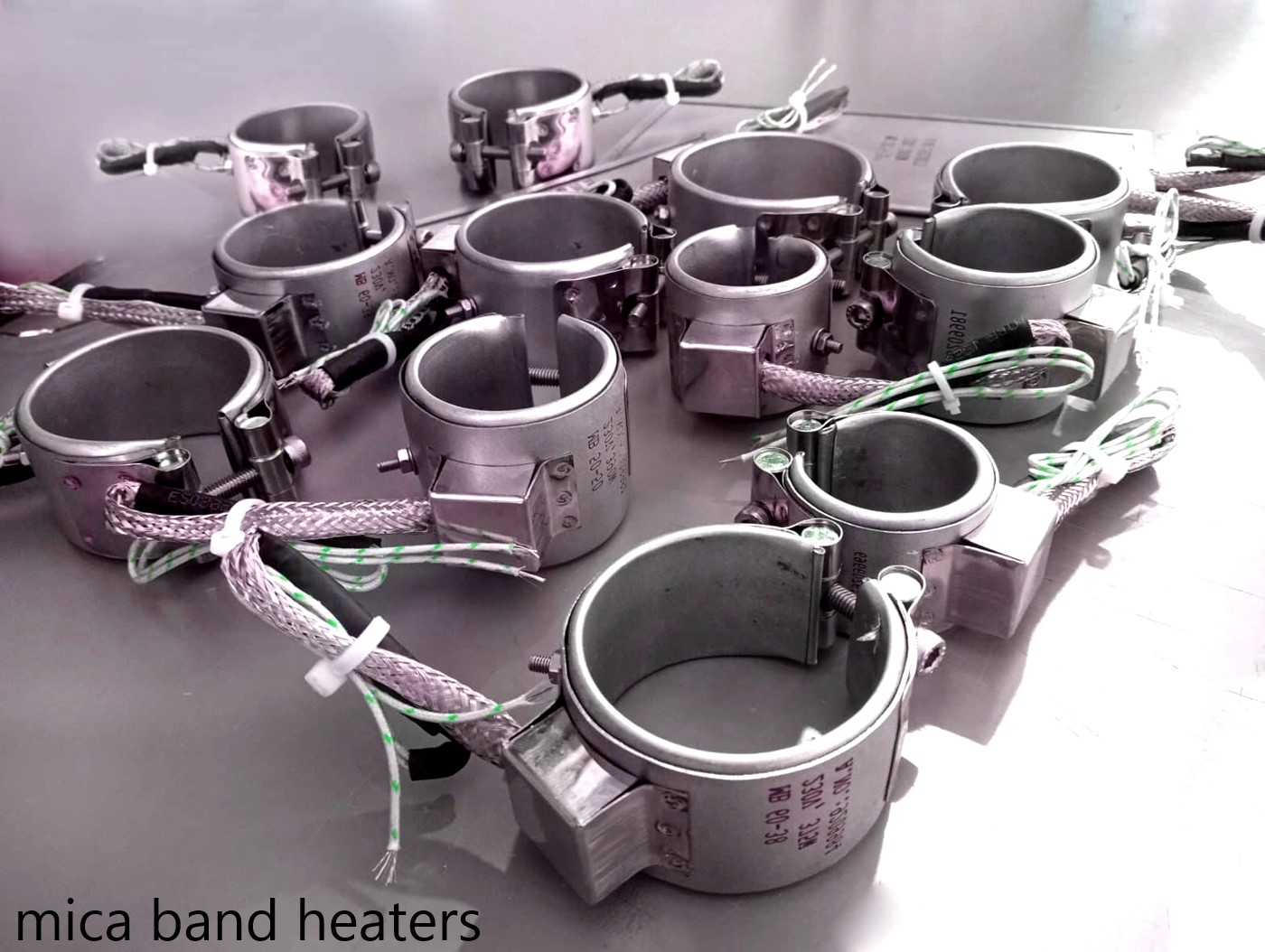Mica band heaters are pivotal components in the realm of industrial heating, offering precision, efficiency, and reliability. Their construction and o
Mica band heaters are pivotal components in the realm of industrial heating, offering precision, efficiency, and reliability. Their construction and operation principles are underpinned by solid scientific concepts, which we will explore in this discussion, delving into their components, insulation properties, and vast applications, without forgetting to compare them with other heaters and touching upon maintenance and safety protocols.
Mica Band Heater Components
In the intricate dance of thermal energy, each part of the mica band heater plays a critical role. At its core, these heaters consist of a heating coil made from nichrome wire, which is responsible for the conversion of electrical energy into heat. Surrounding the coil is the mica insulation—a mineral that stands as a paragon of high-temperature resistance and electrical insulation prowess. The mica is then encased within a metallic sheath, typically made of stainless steel or aluminum, safeguarding the internal components and ensuring even heat distribution. Such robust construction makes mica band heaters indispensable, particularly when precision heating is essential, and it’s not uncommon to find cartridge heaters for sale alongside mica variants, catering to diverse heating needs in industrial environments.
Related: Types of Band Heaters
How Mica Insulation Enhances Efficiency
The mica insulation isn’t just about protection; it’s a maestro of efficiency. The role of mica, with its superb thermal properties, is to confine the heat to the desired area, reducing energy wastage. This efficiency is paramount in applications where thermal precision is a linchpin. Moreover, mica band heaters have a high dielectric strength, meaning they can prevent electrical losses, which in turn ensures that most of the electrical energy is directly transformed into heat. The use of mica thus underlines an environmentally friendly edge, by maximizing energy use and reducing operational costs—a harmony of sustainability and economic efficiency.
Heating Element Design and Materials

The heating element, the lifeblood of the mica band heater, is a marvel of engineering. Crafted from high-grade nichrome wire, it is designed to withstand the ravages of high temperatures while maintaining consistent heat output. The choice of materials here is no accident; it’s the result of relentless pursuit of durability and performance. Nichrome is favored for its high resistance and stability in extreme conditions—traits that ensure the longevity of the heaters. This attention to materials is evident in the construction of cartridge heaters as well, which share the stage with mica band heaters in many industrial scenarios.
Controlling Temperature with Mica Band Heaters
Mastering the temperature within industrial processes is not mere chance—it’s a calculated orchestration using mica band heaters. These heaters often integrate with sophisticated control systems, allowing operators to dial in the exact temperature required for a process with pinpoint accuracy. This control capability is not just about hitting the right temperature; it’s about maintaining it consistently, which is crucial for processes where even minor fluctuations can spell disaster for product quality.
Related: Why Do We Need a Smart Home System?
Common Industrial Applications
Mica band heaters are the unsung heroes in a myriad of industrial applications. Their role is critical in processes such as plastic injection molding, where they ensure the plastic is heated to the precise temperature for optimal molding. Beyond plastics, they are also essential in the food industry, medical device manufacturing, and even in the aerospace sector, where high-performance heating is non-negotiable. The adaptability of these heaters to different environments makes them invaluable—like a chameleon of industry, they fit seamlessly into a variety of heating roles.
Mica Band Heaters vs. Other Heating Elements
In the diverse ecosystem of heating elements, mica band heaters hold a distinct position. Compared to their counterparts, such as cartridge heaters, mica band heaters generally offer superior surface area contact, ensuring more efficient heat transfer for specific applications. While cartridge heaters are well-suited for heating solids through insertion into drilled holes, mica band heaters excel in wrapping around components to deliver heat directly to surfaces. This differentiation in application highlights the importance of choosing the right type of heater for a particular job, a decision that can affect both performance and energy consumption.
Maintenance and Safety Considerations
Despite their durability, mica band heaters do not shy away from the need for regular maintenance. Ensuring the longevity of these heaters involves routine checks for any signs of wear, maintaining electrical connections, and monitoring heater performance to preclude any safety hazards. Safety in operation is paramount—appropriate insulation and guarding against electrical and thermal risks are integral to the industrial use of these heaters. Adherence to maintenance protocols not only ensures safe operation but also prevents downtime, securing a smooth continuum in industrial processes.
In conclusion, the science behind mica band heaters is a tapestry woven with precision, efficiency, and adaptability. Their design, materials, and applications demonstrate the thoughtfulness with which they are integrated into industrial systems. Whether it’s a standalone mica band heater or cartridge heaters for sale, the choices made in heating elements have broad implications on the effectiveness and efficiency of industrial operations. Understanding these subtleties is the cornerstone of maximizing productivity and safety in any high-temperature industrial process.

COMMENTS